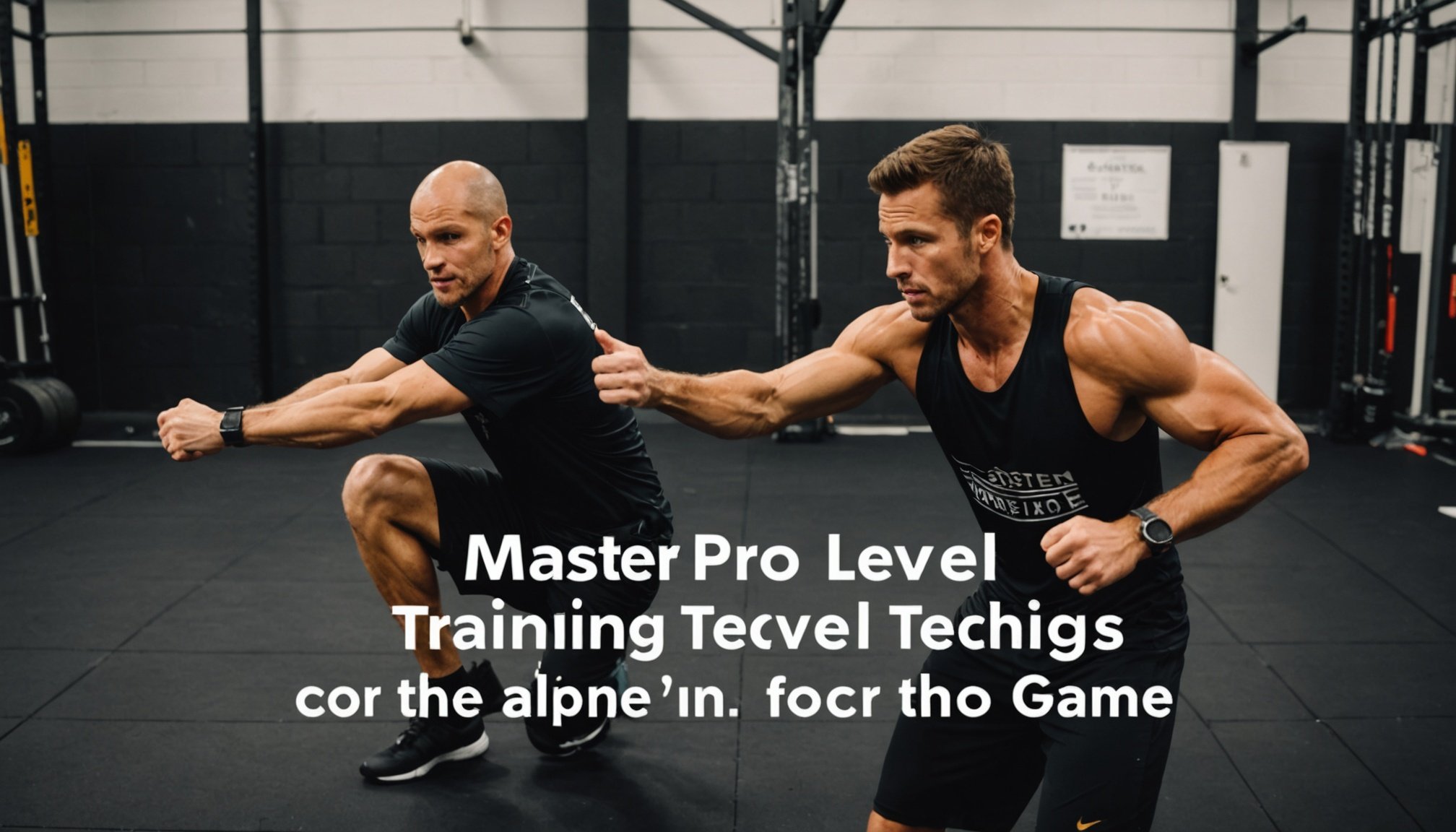Advanced Training Techniques Overview
Mastering pro-level training requires dedication to advanced techniques, and they play a significant role across multiple fields. Skill enhancement is not just about repetition but about understanding and implementing methods that push beyond basic proficiency. Pro-level training is an intersection of targeted strategies, consistent practice, and ongoing evaluation.
Many disciplines, from sports to music and professional settings, benefit significantly from these techniques. In sports, athletes utilize specific drills and exercises that refine their abilities and improve performance metrics. Similarly, musicians might focus on intricate fingerings or breath control to reach virtuoso levels. Professionals can use advanced strategic thinking and decision-making practices, which parallel these physical and artistic endeavors.
This might interest you : Master Your Golf Game: Harness Biomechanical Insights to Enhance Performance and Prevent Injuries for Amateur Players
Consistent practice is the cornerstone of skill development. Repetition with purpose solidifies concepts and techniques learned, allowing for gradual improvement and transformation in performance. This steady effort combined with advanced methodologies forms a powerful approach to mastering any skill.
To truly master skill enhancement, one must commit to ongoing learning and adaptation. This dynamic process ensures that individuals stay ahead in their field, continuously integrating new insights and methods into their training routines.
In the same genre : Master Your Grip: Boost Disc Golf Precision with Pro Tactics
Physical Training Techniques
Physical conditioning is a core component of achieving athletic performance excellence. It encompasses a multifaceted approach aimed at optimizing an athlete’s physical capabilities. Through structured strength training programs, athletes develop muscle strength and power essential for peak performance. Such programs often involve weightlifting, resistance exercises, and plyometrics, each tailored to meet specific sport requirements and individuals’ needs.
Strength and Conditioning Methods
A well-rounded strength and conditioning regime is crucial. Personalized training programs cater to an athlete’s unique physical attributes, exploiting modern technology for tracking and assessing progress. Cutting-edge equipment and fitness apps enable precise measurement of improvements and help set targeted goals crucial for enhancing athletic prowess.
Endurance Building Strategies
Endurance is another cornerstone of athletic success. Techniques such as interval training and aerobic exercises improve cardiovascular efficiency, allowing athletes to perform at high intensity over longer durations. Endurance training may vary greatly depending on the sport, emphasizing its bespoke nature.
Flexibility and Recovery Techniques
Addressing flexibility through practices like yoga and dynamic stretching prevents injuries and promotes recovery. Recovery techniques, including massage and cryotherapy, further ensure that athletes maintain their form and fitness. Together, these components create a holistic approach to training that not only enhances performance but also maximizes longevity in sports.
Mental Training Techniques
Building mental resilience is pivotal in achieving holistic development, especially in high-pressure environments. Techniques for cultivating mental toughness often involve stress management strategies, adaptive thinking, and perseverance under challenging conditions. This fortitude not only boosts performance but also reinforces confidence, enabling individuals to navigate obstacles with ease.
Visualization and Focus Enhancement
Visualization techniques serve as powerful tools in improving performance. This involves the mental rehearsal of tasks or scenarios, fostering a strong connection between mind and action. Athletes and performers often visualize success, which enhances their focus and psychological readiness. Such practices align the mind’s expectations with physical capabilities, leading to performance optimization.
The Role of Mindfulness in Training
Mindfulness practices, including meditation, significantly contribute to cognitive skill improvements. By focusing attention on the present moment without judgment, individuals enhance their ability to concentrate and maintain calm under pressure. This focus enhancement is crucial for maintaining consistent performance over time, and it aids in reducing anxiety and distraction during training or competition.
Through these mental training techniques, professionals across fields can bolster their cognitive abilities, ensuring they remain resilient and focused, even under the most demanding circumstances.
Skill-Specific Training Strategies
Enhancing skills through specialized training is crucial in honing one’s prowess in specific domains. This section examines how distinct approaches in sports, arts, and professional settings contribute to advanced skill development.
Sports-Specific Techniques
In sports, skill development hinges on targeted practices that cater to the specific demands of the sport. Techniques such as precision drills, sports psychology, and video analysis are employed to refine an athlete’s techniques. By focusing on these specialized training methods, athletes can fine-tune their abilities, leading to improved performance outcomes.
Music or Arts Mastery Approaches
In the realm of music and the arts, specialized training often involves intensive practice sessions aimed at specific skills. Musicians might engage in scales, etudes, and sight-reading to elevate their technical mastery. Artists may focus on mastering particular techniques or mediums. By delving deep into these areas, individuals can achieve a higher level of artistry.
Professional Development Training
For professionals, expert insights into industry-specific techniques are invaluable. This includes mastering the latest tools or methodologies crucial for advancement. Tailoring training to meet the distinctive needs of each sector ensures individuals remain competitive and achieve sustained professional growth. Analyzing niche methodologies can provide a significant edge in any industry.
Incorporating Technology in Training
Technology integration is transforming the training landscape, enabling more precise and effective methodologies across disciplines. One of the most significant advancements is the use of training apps, which provide tailored workouts, track progress, and offer real-time feedback. These tools are becoming indispensable for those seeking to enhance their training regimen through accessibility and personalized features.
Another leap in training comes from wearable technology. Devices such as fitness trackers and smartwatches monitor metrics like heart rate, step count, and sleep patterns, providing critical data for optimizing training effectiveness. This constant stream of data helps in making informed decisions about workouts and recovery.
Data analysis further improves training outcomes by identifying performance trends, areas for improvement, and optimal times for peak training sessions. By evaluating this data, athletes and trainers can customize routines to fit specific needs and goals, avoiding unnecessary strain and maximizing potential.
Successful technology integration is evident across various domains. For instance, elite athletes like marathon runners use these tools to fine-tune pacing and endurance. In the corporate world, professionals use data-driven insights to enhance productivity and performance. Together, these innovations propel training efficiency to new heights, offering users a sophisticated edge.
Creating a Comprehensive Training Plan
A comprehensive training plan is essential for achieving peak performance and mastering skill development. It provides a structured approach, ensuring progress tracking and adaptability to changes in training needs.
Setting Short and Long-term Goals
Crafting both short and long-term goals is critical in any training framework. Short-term goals serve as stepping stones, providing immediate focus and motivation. Long-term goals, conversely, set the overall direction, ensuring that training aligns with desired outcomes. Consider asking: “What specific skills do I wish to master, and by when?” By redesigning training objectives based on these questions, individuals can maintain a clear trajectory toward achievement.
Adjusting Training Based on Progress
Regular progress tracking is vital to any advanced training plan. Through consistent assessment, one can tweak the training elements to better suit current performance levels and objectives. For example, if strength improves faster than anticipated, the focus might shift to endurance or flexibility. Such adjustments ensure that training remains both challenging and effective.
Importance of Cross-Training
Diverse training approaches, or cross-training, offer significant benefits. By integrating varied disciplines, individuals not only enhance overall capability but also reduce the risk of overuse injuries. Cross-training delivers a well-rounded set of skills, leading to enhanced performance across different aspects of activity proficiency.
Success Stories and Testimonials
The journey of mastering pro-level training is illuminated by personal stories and expert testimonials. These narratives not only inspire but provide proven strategies to emulate. Consider the case of an elite athlete who transformed their career through relentless dedication to advanced techniques and consistent practice. Their story underscores the power of targeted strength and conditioning methods, underscoring the multifaceted approach essential for peak performance.
In the realm of arts, numerous musicians and artists harness specialized training strategies. Interviews with virtuosos reveal that their ascent to mastery is fuelled by unwavering commitment to skill enhancement, utilizing expert insights to finetune their craft. Such testimonials highlight the profound impact of bespoke training programs tailored to individual needs.
Professional sectors also teem with narratives of individuals who, through strategic training, have gained a competitive edge. These testimonials serve as motivational blueprints for others, demonstrating that success is attainable through a strategic mix of persistence, adaptation, and continuous learning. Engaged readers may find these stories align with their experiences, offering inspirational lessons that emphasize the importance of resilient effort and innovative training methodologies. These proven strategies pave the way for ongoing personal and professional growth.











